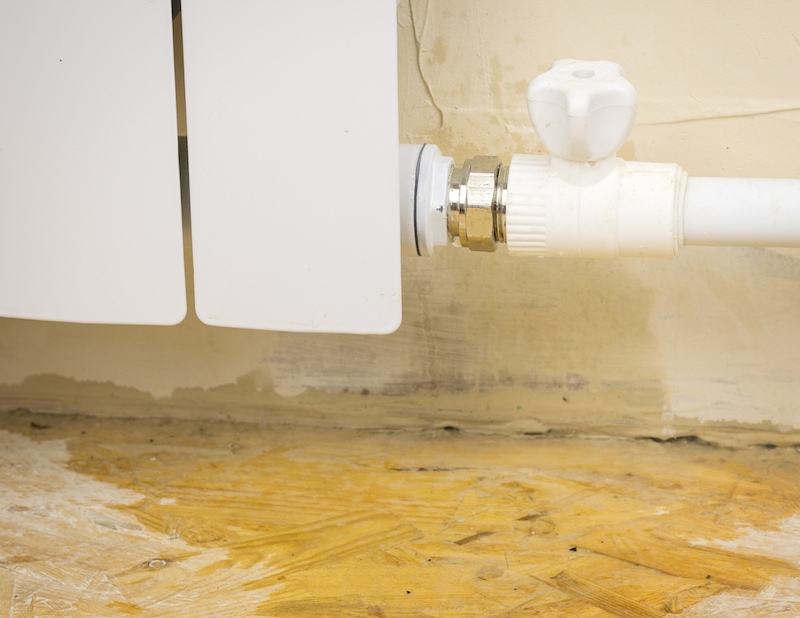The Six Most Common Sources of Water Leaks in Your Home: How to Identify and Address Them
The Six Most Common Sources of Water Leaks in Your Home: How to Identify and Address Them
Blog Article
Presented here below you can get a bunch of wonderful insight when it comes to How to detect water leaks in your home.

Leaks not just trigger waste of water but can additionally trigger unnecessary damages to your home and also promote unwanted natural growth. By looking and recognizing for daily scenarios that trigger leaks, you can shield your home from future leakages as well as unneeded damage.
Encroaching origins
Most water leakages begin outside your home rather than inside it. If you observe a sudden decline in water pressure, claim in your faucet, take time to head out and examine your backyard. You may see wet patches or sinkholes in your backyard, which may indicate that tree origins are attacking water lines triggering water to permeate out. You can have your plumber check for breach, specifically if you have trees or shrubs near your building.
Rusty water supply
As time goes by, your plumbing system ages and rust such as corrosion might start eating away the pipes. This may be the source of discoloration or warping on your pipes. This asks for an evaluation with your plumber right away. Consider replacing the pipes considering that they are at a greater threat of rust than the more recent versions if our plumbing system is old.
Faulty Pipe Joints
The factor at which your pipelines link is often the weakest link in the waterline. Pipeline joints can degrade with time, causing water leakages. The majority of pipe joints are not quickly visible. If you have noisy pipes that make ticking or banging sounds, specifically when the hot water is switched on, your pipe joints are probably under a lot of stress. It is suggested to have your plumber evaluate your system annually.
Instant temperature changes.
Severe temperature level changes in our pipelines can trigger them to expand and get suddenly. This expansion as well as contraction might cause splits in the pipelines, especially if the temperature level are below cold.
Poor Water Connectors
At times, a leak can be triggered by loosened hose pipes and also pipelines that provide your appliances. In situation of a water links leak, you may see water running directly from the supply line or puddles around your appliances.
Blocked Drains
Obstructed drains may be annoying as well as inconveniencing, yet they can in some cases wind up creating an overflow resulting in rupture pipelines. Keep removing any type of materials that may decrease your drains pipes that can obstruct them to avoid such aggravations.
All the above are reasons for leaks yet not all water leaks result from plumbing leaks; some leaks may come from roofing system leakages. All leakages need to be fixed immediately to prevent water damage.
Leakages not just cause waste of water but can likewise trigger unneeded damages to your house and promote unwanted organic growth. By comprehending as well as looking for everyday situations that cause leaks, you can protect your home from future leaks and unnecessary damage. Today, we will look at six leak causes that may be causing your pipes to leak.
At times, a leak can be triggered by loose hose pipes and pipes that supply your devices. In case of a water connections leak, you might see water running straight from the supply line or pools around your home appliances.
How To Check For Water Leak In Your Home
How To Check for Leaks
The average household's leaks can account for nearly 10,000 gallons of water wasted every year and ten percent of homes have leaks that waste 90 gallons or more per day. Common types of leaks found in the home are worn toilet flappers, dripping faucets, and other leaking valves. These types of leaks are often easy to fix, requiring only a few tools and hardware that can pay for themselves in water savings. Fixing easily corrected household water leaks can save homeowners about 10 percent on their water bills.
To check for leaks in your home, you first need to determine whether you're wasting water and then identify the source of the leak. Here are some tips for finding leaks:
Take a look at your water usage during a colder month, such as January or February. If a family of four exceeds 12,000 gallons per month, there are serious leaks.
Check your water meter before and after a two-hour period when no water is being used. If the meter changes at all, you probably have a leak.
Identify toilet leaks by placing a drop of food coloring in the toilet tank. If any color shows up in the bowl after 10 minutes, you have a leak. (Be sure to flush immediately after the experiment to avoid staining the tank.)
Examine faucet gaskets and pipe fittings for any water on the outside of the pipe to check for surface leaks.
Undetected water leaks can happen without the home or business owner even realizing. If you suspect a water leak, but not able to find the source. It is time to contact a professional water leak detection service, The Leak Doctor.
How To Find a Water Leak In Your Home
https://www.leakdoctor.com/blog/How-To-Check-For-Water-Leak-In-Your-Home_AE197.html
/GettyImages-957479686-f3d2e677f2e749fc98aa207b474c5c1f.jpg)
Do you appreciate reading up on How to detect water leaks in your home? Make a comment directly below. We will be delighted to know your opinion about this piece. Hoping that you visit us again later on. Sharing is good. Helping people is fun. I love reading our article about How Fast Water Damage Can Ruin Your Home.
Schedule Your Job Now Report this page